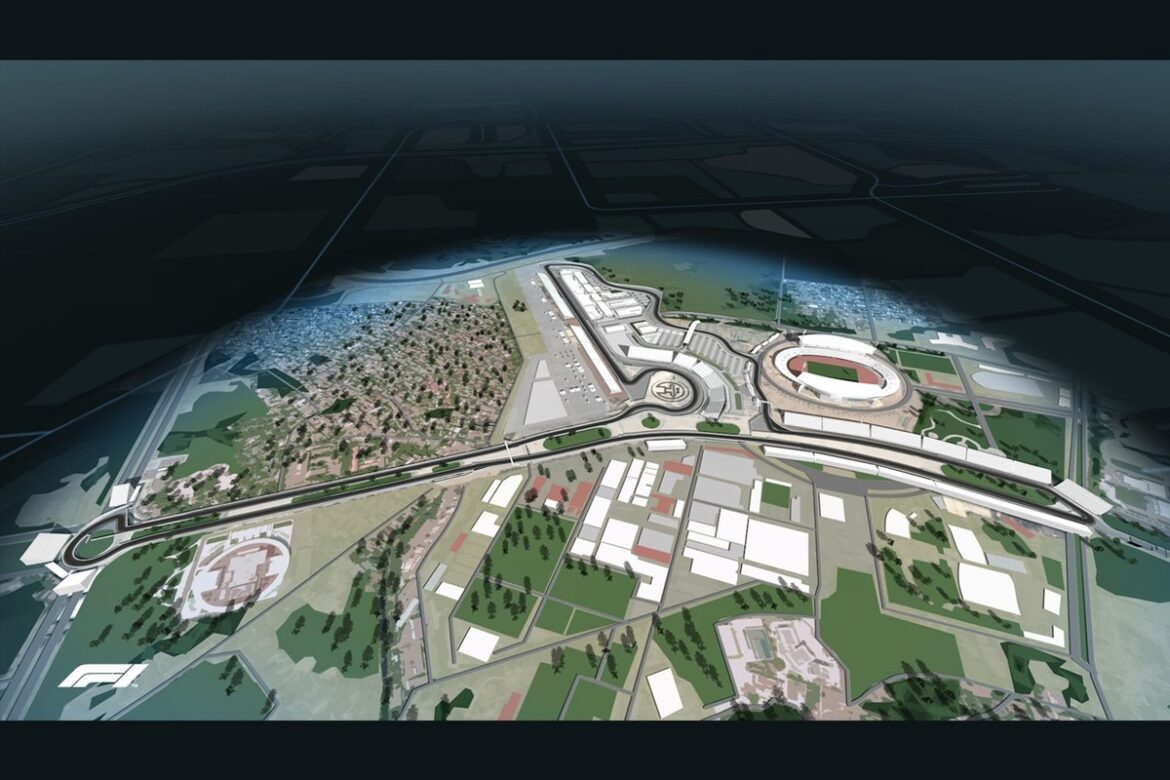Before the term “lockdown” became a part of our daily vocabulary, and before virtual family quizzes on platforms like Zoom became commonplace, Formula 1 had ambitious plans for the 2020 season. This season was poised to mark the return of F1 to the Netherlands, a country that hadn’t hosted a race in 35 years, and it was also set to introduce the inaugural Vietnamese Grand Prix in Hanoi. However, with the onset of the COVID-19 pandemic, these plans were abruptly halted.
The return to Zandvoort in the Netherlands finally materialized a year later, but the long-awaited race on the $600 million Hanoi circuit, designed specifically for the Vietnamese Grand Prix, never happened. The grand prix was a significant announcement made by Liberty Media in 2018, representing the first newly added race under the ownership of the current management. The track’s layout was crafted in collaboration with renowned designer Hermann Tilke, incorporating both city streets and specially constructed sections intended for public use once the race was completed.
Construction on these custom sections began in March 2019, and the track was completed less than a year later, just in time for its scheduled debut in April 2020. Unfortunately, that debut never took place. The absence of the Vietnamese race was further complicated when Nguyễn Đức Chung, the Chairman of the Hanoi People’s Committee and a crucial figure in the event’s organization, was arrested on corruption charges. While these charges were unrelated to the race itself, they cast a cloud of uncertainty over the future of the Vietnamese Grand Prix.
As a result, Vietnam has yet to be included in any F1 schedules since that time. The 3.5-mile circuit in Hanoi remains intact, with the pit buildings constructed for the grand prix still standing. The paths that would have led thousands of F1 enthusiasts to their seats are also still visible, though they are now overgrown and in disrepair.
Recently, the YouTube channel Beach Office explored the abandoned racetrack to evaluate its condition after five years of neglect. The findings reveal a stark transformation. Once carefully landscaped areas around the circuit have begun to revert to a more natural state, and the illumination systems that lit the paths and roads are deteriorating due to a lack of maintenance. Potholes have formed in the asphalt, with plants breaking through the cracks, and the road markings that once highlighted the twists and turns of the track have long faded away.
Interestingly, the grid boxes at the starting line remain surprisingly well-preserved, with bright white and yellow markings still visible, indicating where the cars would have lined up on that fateful day, April 5, 2020.
From a distance, the grand pit building appears to be in relatively good condition. However, as one inspects the area more closely, signs of decay become evident. Grey stains drip down the fences and balustrades that once lined the seating areas intended for VIPs and invited guests, showcasing that the finish is not quite up to the high standards typically associated with Formula 1 events.
The remnants of the project include the landscaped grounds, the paddock building, and a short section of the track. Meanwhile, the city streets that were meant to be temporarily closed for the event continue to serve as thoroughfares for commuters and delivery drivers navigating through Hanoi, all while the towering lights intended to illuminate the circuit stand silent and unused.
The exploration of this abandoned track offers a fascinating glimpse into a piece of Formula 1 history that, despite never hosting a grand prix, still holds a unique place in the narrative of the sport. Five years after the race that was meant to take place, the closest the world has come to experiencing racing in Hanoi was through the realm of esports. The Vietnamese circuit was included in the 2020 Formula 1 video game and featured prominently in F1’s esports league that same year.
The story of the Vietnamese Grand Prix serves as a reminder of the unpredictability of global events and their impact on sports. The ambitious plans that once existed for Hanoi highlight the complexities of organizing international events, especially in the face of unforeseen challenges like the COVID-19 pandemic.
The situation surrounding the Hanoi circuit also illustrates the broader implications of governance and the importance of transparency in public projects. The arrest of a key figure involved in the grand prix’s organization raises questions about the future of similar events in Vietnam and the potential for the country to host international sporting competitions in the future.
As fans of motorsport continue to look forward to the return of races around the globe, the tale of the Vietnamese Grand Prix remains a poignant chapter in the history of Formula 1. It emphasizes the sport’s resilience and adaptability in the face of challenges, while also serving as a cautionary tale about the complexities of organizing large-scale events.
In summary, while the Vietnamese Grand Prix was never realized, the existence of the Hanoi circuit continues to evoke curiosity and interest among motorsport fans. The remnants of this ambitious project stand as a testament to what could have been and serve as a reminder of the ongoing evolution of Formula 1. As time moves forward, the possibility of revisiting the idea of a race in Vietnam may still linger, leaving fans hopeful for a future where the roar of engines might finally echo through the streets of Hanoi.
